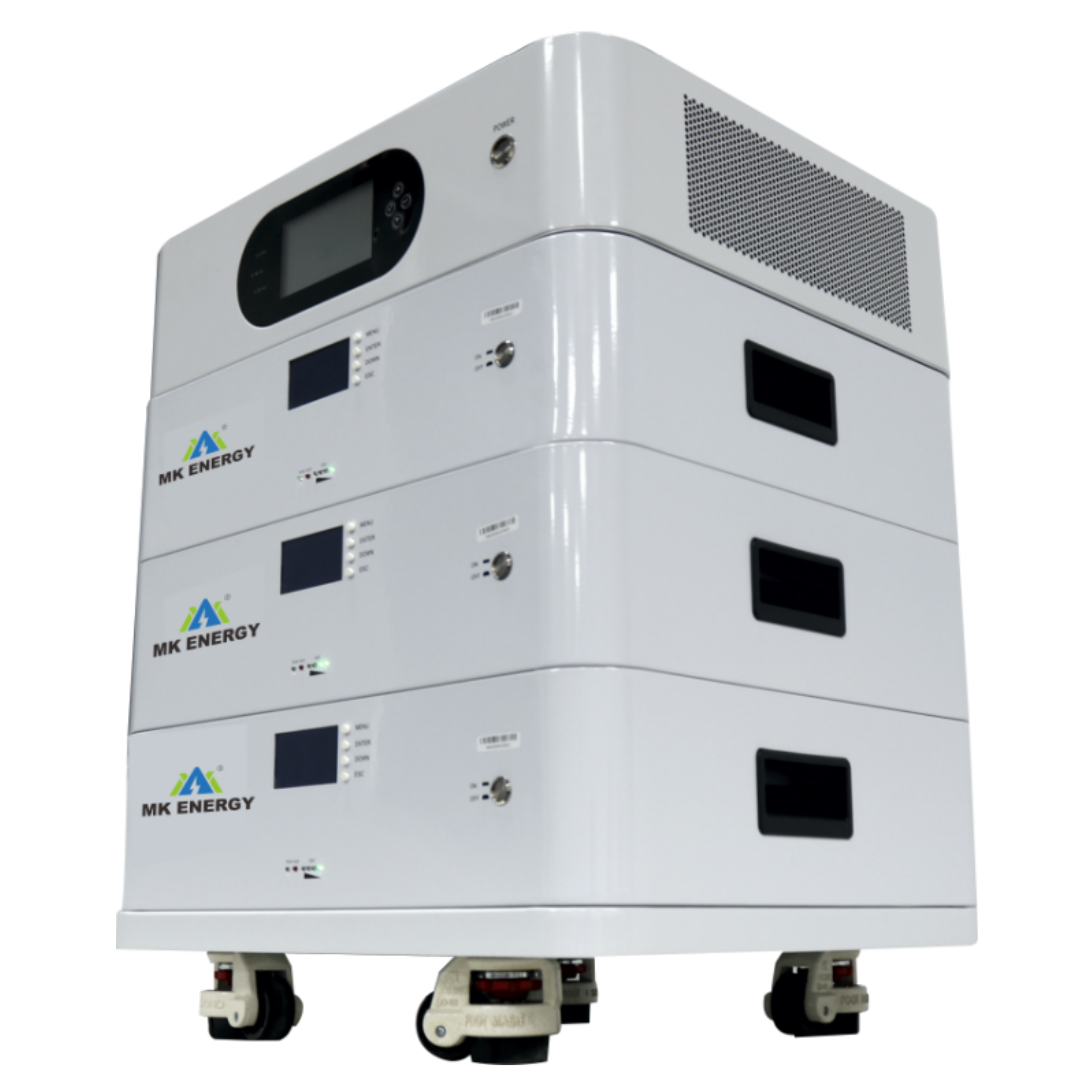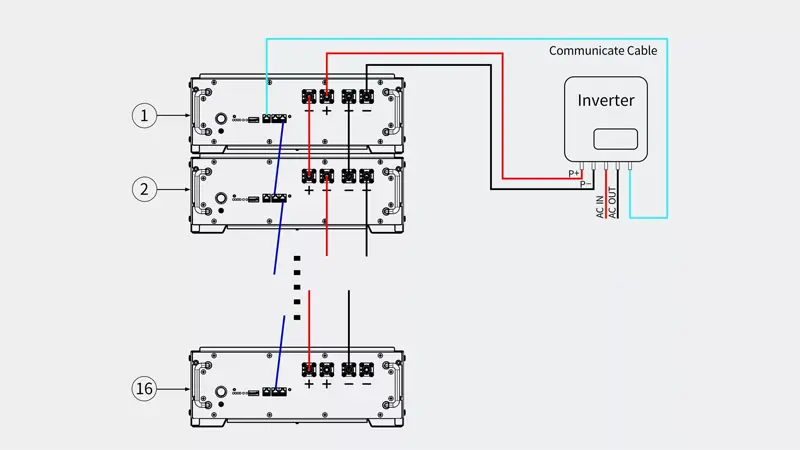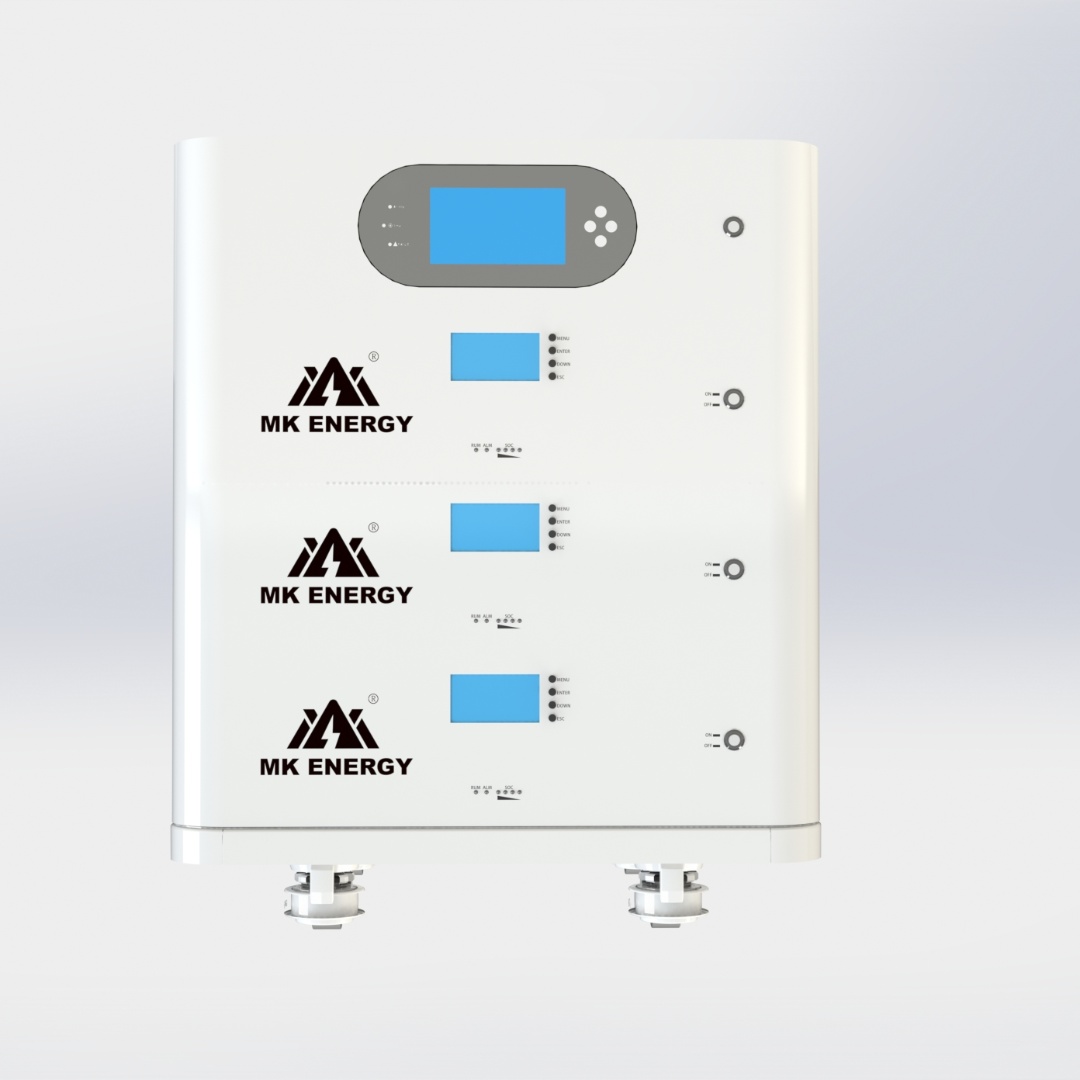Currently in the market, more and more people are showing great interest in stacked batteries when powering homes or businesses. Lithium battery manufacturers have launched stacked battery products. There are many types of stacked LiFePO4 batteries, but how to distinguish them? ? This article will describe a complete guide to stacked LiFePO4 batteries, hoping to provide sufficient reference for lithium battery dealers and users.
What is a stacked LiFePO4 battery?
The specifications of stacked LiFePO4 batteries are the same as those of network server room chassis, so they can be placed in standard server racks in data centers. They are also commonly called rack batteries. The most common general sizes are 3U or 4U in height. Below 1U and 2U, standard 19-inch chassis. The server rack battery has a compact design and is suitable for integrating built-in BMS, circuit breakers and other components in a 1U-4U space with a 48V (51.2V) 100Ah rack battery.

Advantages and Disadvantages of Stacked LiFePO4 Batteries
Server rack batteries were originally used in data centers as uninterruptible power supplies (UPS) to provide backup power to servers during power outages. They are a safety net that ensures your digital operations run smoothly, preventing downtime and potential data loss.
So what are the pros and cons of server rack batteries?
Advantages of stacked LiFePO4 batteries
Small size: Server rack batteries range in size from 1U to 4U, depending on capacity, with a standard 19-inch rack-mount width for a clean appearance and easy installation.
Easy to use: plug and play.
Safety: Metal shell, lithium iron phosphate A-grade battery, safe and long life.
Series and parallel connection support: supports up to 16 parallel connections to meet high power consumption requirements.
Intelligent communication interface: standard CAN, RS485, Bluetooth communication interface, which can remotely debug and monitor the operation of the power system online through the mobile phone. You can check the voltage, SOC and overall voltage and current of each battery, simplifying network management and improving the reliability of the system. sex.
Disadvantages of stacked LiFePO4 batteries
Not easy to carry: A 48V 100Ah server rack battery can weigh up to 50kg; you have to use tools to move it.
Difficult to repair: When the battery fails, it is difficult to repair and needs to be replaced; for 48V batteries, there are usually 16 or 32 battery cells inside.
Price and application of stacked LiFePO4 batteries
The price of stacked LiFePO4 batteries depends on the product’s cells, capacity, communication functions, quantity, etc. Of course, there are other factors, such as increased warranty years, shipping, etc. Its application scenarios are not limited to server rooms, but are also widely used in home energy storage, communication base stations, UPS and other scenarios.
How to choose the stacked LiFePO4 battery you need
Voltage and capacity
A battery’s capacity is the total amount of electricity it can store, measured in kilowatt hours (kWh) or ampere hours (Ah). If the battery capacity is in Ah, simply multiply the battery voltage by the Ah rating:
Wh = Ah * V
Taking a 48V 100Ah server rack battery as an example, 48V * 100Ah = 4800Wh = 4.8Kwh.
Charge-discharge ratio
Capacity refers to how big the battery is, while charge/discharge ratio refers to the amount of power the battery can provide at a certain moment, or how quickly the battery charges and discharges.

Discharge depth
A battery’s depth of discharge (DOD) is the capacity of the battery that has been used. Most battery manufacturers specify a maximum DOD for optimal performance. For example, if a 10 kWh battery has a maximum DoD of 90%, the battery should not exceed 9 kWh before charging.
In theory, all lithium batteries can be discharged to 100%, but this will shorten their cycle life and may affect the warranty.
Lifespan and warranty
Generally speaking, most lithium batteries have a life expectancy of 8 to 16 years. In most home solar systems, your batteries are “cycled” (charged and discharged) every day. Over time, the battery’s capacity decreases.
It’s similar to the battery in your phone – charging your phone every night shortens the battery’s life. Extreme temperatures can also affect battery life. Your lithium battery will come with a warranty that guarantees a certain number of cycles or life, usually within a certain maximum DOD. For example, the warranty usually states “10-year maximum (or average) DOD is 80%” and “battery capacity 60%” is retained after 10 years.
Scalability
Most lithium batteries on the market today are designed to be “scalable,” meaning you can connect multiple cells in series and parallel to a solar system for extra capacity. Check this option to ensure you can expand capacity in the future.
Install
Nowadays, some home backup batteries can be hung on the wall, while others must be placed on the ground. This depends on your specific usage scenario and choose the appropriate battery shape according to your needs.
There are some important factors to consider when choosing a stacked LiFePO4 battery that suits your needs. For example, the battery management system (BMS) plays a vital role in the safe use of the battery pack, providing maximum protection for the battery cells. It provides overcharge protection, over-discharge protection, short circuit protection, temperature protection and battery balancing.
MK can assess your current usage needs and provide you with the best energy solutions, including energy assessment, system design, installation and routine maintenance. If you have battery needs, please contact us at sales@mkenergycn.com.

